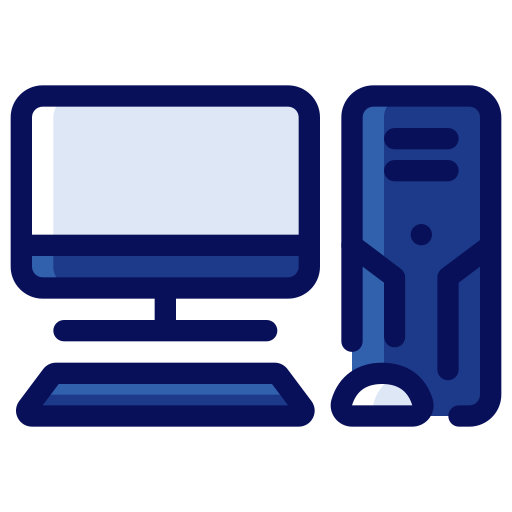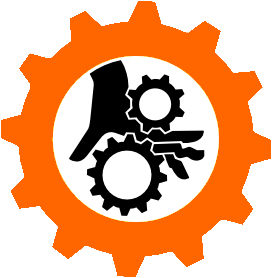

You can still refuse. You’d have to sit in prison, but that’s worth it at this point
Cryptography nerd
Fediverse accounts;
Natanael@slrpnk.net (main)
Natanael@infosec.pub
Natanael@lemmy.zip
Lemmy moderation account: @TrustedThirdParty@infosec.pub - !crypto@infosec.pub
Bluesky: natanael.bsky.social


You can still refuse. You’d have to sit in prison, but that’s worth it at this point
The busybox is a busy box because a cat is busy in the box
You can find cat in most containers
Same supplier for cans / labels. Sometimes even the same packing / mixing (/ and something also brewing) plant. It’s slightly more common with mislabeled soda. Alcohol is supposed to monitored and checked more closely before delivery.


IR transmitters
Miracast (in base open source Android, especially access to the ability to receive)
Scrolling notification text in the notification bar (seriously, that was sooooo much better than the obnoxious new default pop-up notifications)
A bunch of permissions that’s been too locked down (stuff used by Tasker, networking tools, etc)
Type N is extremely common here in Sweden, without the ground part. Homes only have the F sockets, but extension cables usually combine both and tons of devices use the N plug


ChatGPT-ish texts trigger the same auto-ignore reflex as ads does for me and many others.


No, the container environment uses default open source libraries. You don’t add any Steam dependencies to make software run in that environment. You can run it without Steam too. It’s just that Valve are the ones maintaining and updating this particular packaging of containers. When Valve releases new versions of their container (including updated default system libraries), you have to test compatibility with it or stick to using an older one. Similar to how Windows software versions would work best with different Proton versions.
You can use the Steam SDK when using it, and you can also choose not to.
Flatpack is a separate thing, which only handles Linux software within the regular desktop environment (a different method for packing software dependencies, managing system permissions, etc). The main difference is that Flatpack software can integrate with the regular Linux desktop environment, but the container based solution is fully separate from it (runs in gaming mode).


No, Wine (and Proton) is a compatibility layer (API translation, etc). Containers is an isolation method which hides the details of the OS from the software and gives it a standardized environment.
https://github.com/ValveSoftware/steam-runtime
No matter what Linux distribution you run Steam on, the only thing you need to do is to get the container system up and running. Once that runs, all software that runs in these containers will run on that device.


Why are you writing so much like it though, formatting and all. Did you ask it to format the list for you?


There’s a lot of similarities and differences - the Steam Deck’s gaming mode is able to run a very barebones OS, similar to the very basic OS that the Nintendo Switch runs, with the game running in comparable sandboxes with stable software interfaces.
But Nintendo worked with Nvidia specifically to develop a variant of their hardware dedicated for gaming, while Valve essentially put a Linux laptop in a handheld console format (IIRC they did get help from AMD, but it wasn’t the same kind of deep collaboration), which notably may have different components between different hardware revisions.
When you try to maximize game performance that makes a difference, because on the Switch you can reliably push the hardware to the limits and expect it to keep working and on a Deck you have to test the hardware before pushing it. And if you find a trick that depends on architectural quirks you have to special-case it to not break on other hardware. There’s no guarantee that rarely used hardware features (both physical, and CPU/GPU instructions, etc) will stick around on a future revision of a Deck, while Nintendo guarantees forward compatibility (with help from Nvidia).
Nintendo even worked with Nvidia to emulate the Switch 1 GPU when running games for the first Switch on a Switch 2! They’re even going so far that they’re patching the emulation layer on a per-game basis to fix games where the default emulation method fails! And the ability to do this depends on knowing the exact properties of the hardware revisions of both the original and new GPU! (there’s architectural differences in the GPU that would break some games unless it was emulated)
Now Lenovo also has devices running SteamOS on different hardware, so games that runs on both either needs special cased optimizations for both, or only generic optimizations, or they simply have to decide to support one specific model better than others (which could end up with a game looking worse on better hardware because the dev didn’t try as hard with that hardware)


The only part they could realistically charge for is the Steam store access. Everything else is open source and portable


Steam on Linux defaults to providing a container based standard Linux environment which is independent of the underlying OS, providing access to all the expected software libraries and OS calls that games need to run.
This is integrated into SteamOS. It’s also available via Steam on any other Linux distro. (And if you wanted to you could cut that part out and run it without Steam.)
When running Windows games it even runs Proton within this container environment.
That gives you a single very predictable and version controlled software environment.
Meanwhile Windows randomly deprecates stuff that somebody might have invested tons of development effort into (silverlight, mixed reality, etc)


We don’t need other people to ask chatgpt for us


It says 4k, so linking to a 240i version


Either you’re a bank under strict regulations when you’re handling that kind of money, or you have no business processing that kind of money. PayPal & co dodges most regulations due to technically not being a bank, but at that size they shouldn’t be able to abuse loopholes.


Find out who made it mandatory, then CC them on every error the bot makes ever
Bonus points if it make an “agentic” LLM 8 ball do the forwarding for you


No nationalists of any kind, no fundamentalists
As a Swede, we speak English incredibly well on average and automatic translations are very obvious (they can’t adapt expressions as well as human translators can, etc). It’s very annoying when automatic translations are forced on or the default.
This isn’t an automatic complete win for them.
Being allowed to train under fair use rules doesn’t mean you’re protected if your LLM still regurgitates content.
https://arstechnica.com/tech-policy/2025/07/nyt-to-start-searching-deleted-chatgpt-logs-after-beating-openai-in-court/